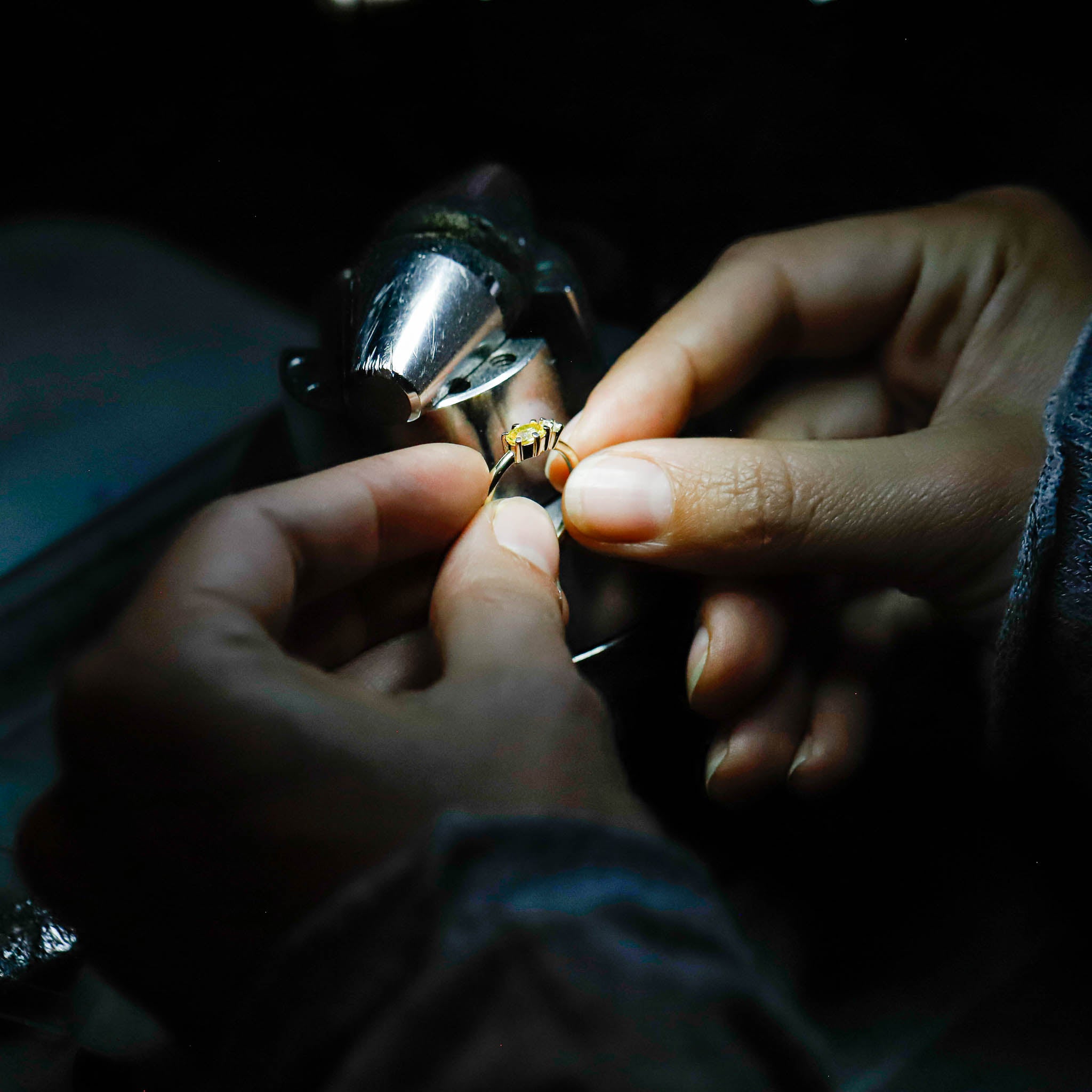
Diamonds Unearthed: Exploring Natural and Lab-Grown Diamonds
Lab-grown diamonds
Lab-grown diamonds are crafted within laboratories in one of two ways. First up, you've got the High Pressure High Temperature (HPHT) method, where science mimics crazy intense conditions with pressure and heat (we're talking 1200-1600°C). Then there's the Chemical Vapour Deposition (CVD) method, where they basically pop a diamond 'seed' into a gas chamber and let the magic happen. The finished lab-grown diamond boasts the same chemical composition as naturally mined diamonds – pure, crystal-clear carbon. To the naked eye, they're virtually indistinguishable
You may be surprised to learn that lab-grown gemstones have been around as far back as the 1890s, with the creation of sapphires, rubies and emeralds. Fast forward to the 1950s when the first lab-grown diamond was successfully produced. Advancements in CVD technology have since revolutionised the process, with lab-grown diamonds now efficiently produced in mass with machines as small as a conventional oven. Their growing popularity, abundant supply and shrinking production cost means buyers now have greater opportunity in terms of budget and design.
When weighing the merits of lab-grown versus natural diamonds, Black Finch’s co-founder and master jeweller, Raymond, urges us to ponder what truly gives something its value and significance. “For us, it’s the rarity and fascinating uniqueness of each individual diamond,” he explains.

Natural diamonds are earth’s delights sculpted by the forces of nature over 1 to 3 billions of years. It’s truly mind blowing! Each natural diamond, a finite wonder, carries the distinct marks of its journey, serving as a tribute to the Earth's geological marvels and eternal allure. Mined from select locations around the globe, these diamonds possess an unmatched mystique, cherished for their rarity, authenticity, and inherent connection to the natural world. When it comes to investing in jewellery, we believe in the enduring legacy and worth of natural diamonds, just as we do with any other finite treasure like gold.
We hold natural diamonds dear not only for their romantic symbolism but also for their profound ties to ancient history and the cosmos. However, in acknowledging our responsibility to protect the natural world, it is only fair we source and purchase from ethical businesses. For us, it means we only work with conflict-free natural diamonds certified under the Kimberley Process. This global initiative addresses the health issues surrounding mining and the human implications from the industry's history in financing war. The Kimberley Process Certification Scheme (KPCS), supported by governments, organisations, and industries across 85 countries, stands as the most significant collaborative effort in curbing the trade of conflict diamonds.

While lab-grown diamonds offer an innovative alternative, the intrinsic allure and profound history of natural diamonds continue to captivate hearts and minds alike. At Black Finch, we celebrate the unparalleled beauty and timeless elegance of these remarkable gems, honouring their legacy as cherished symbols of love and luxury for generations to come.
Our recommended reading list
1. Lab-grown diamonds come with sparkling price tags, but many have cloudy sustainability claims
2. The Lowdown on Lab-Grown Diamonds
3. Going Natural! The Era of Lab-Grown Diamonds Comes to a Halt?
4. How a Generic Marketing Strategy is Captivating Consumers on the Values of Natural Diamonds
6. Natural Diamonds and Sustainability










